Not all of us have a green thumb when it comes to being plant parents. But it doesn’t mean you can’t decorate your area with lush vegetation! These self-watering planters are the answer to your plant troubles if you have difficulty remembering to water your plants on a regular basis. Using a reservoir and irrigation, a self-watering planter allows your plants to obtain water at the roots and consume it at their own speed. We looked at dozens of self-watering planters to see how they were made, how well they worked, and how easy they were to use and keep up. Self-watering planters use a cloth cable or a porous clay barrier to get water from a reservoir inside the planter. Because of this, the soil gets wetter, which lets the plant’s roots soak up all the water they need.
10 Best Self-Watering Planters in 2022
This technique aids in avoiding difficult-to-remedy problems from overwatering, such as root rot. A self-watering planter will assist in protecting tropical plants from drying out if you have tropical plants that need to have the soil kept moist. You’ll only need to top off the reservoir more frequently. These 10 self-watering planters will keep your greens happy and growing, whether you’re a seasoned gardener or new to the world of indoor plants.
What to Look for in a Self-Watering Planter
Material
Self-watering planters are frequently made of heavy-duty plastic, which is an excellent material since it can withstand the environment and won’t be harmed by soil or water. Other choices include resin, cedar, and coated metal. They can be more expensive and harder to move than their plastic counterparts, but they often don’t rust, warp, or fade.
Water Storage
Self-watering planters often use a reservoir system to collect extra water and save it for later use. The plant absorbs water either directly from the earth and roots or indirectly through a rope or other material that raises the water. A few ounces to more than half the size of the planter is the range of the reservoir’s water capacity.
The duration of the water varies with the plants and their environment for growth, but most plants can hold onto it for a few days to a few weeks.
Water Level Indicator
Water level indicators are common in self-watering planters and may be used by growers to determine how much water is present. When it comes to indoor plants without access to rainfall, this is crucial. Seek out an easily readable water level indicator close to the reservoir’s entrance. This makes it easy to refill and helps you know when to do so.
1. Terracotta and Glass

Glass and terracotta? Please, yes. Although terracotta is a porous material that dries out rapidly, it actually allows water to travel through it and into the soil within when submerged. You just need to lay this planter in the glass section for precisely hydrated plants because it is built with a cylinder-shaped glass reservoir that holds a terracotta planter.
Semi-Translucent
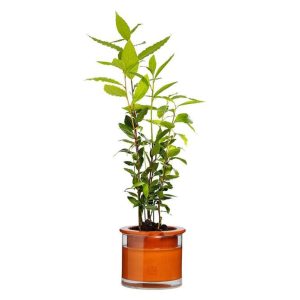
We love how understated this self-watering planter from Wet Pot looks. With this simple method, you also put a terracotta pot inside a clear glass cup so you can see the water level every day.
Minimalist Design
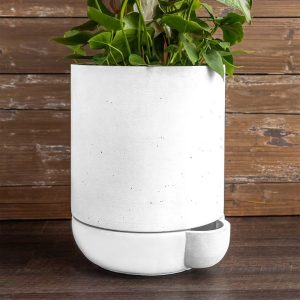
Less may sometimes be more. This pot can be used both indoors and outside, and the water reservoir may be filled without taking off the planter on top. When the saucer runs dry, just replace it with water, and you’re ready to go.
Arty Vibes
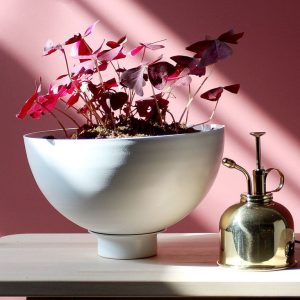
This self-watering planter from The Sill is ideal if you’re searching for something that can also serve as a decorative sculpture. The two-part system, which is made of lightweight, matte aluminum, functions similarly to previous self-watering planters: To keep the soil nicely moist, it employs a cable that soaks up water from an inside reservoir. Just lift the bowl to see how much water is still in the bottom portion.
Sips for Your Seedlings
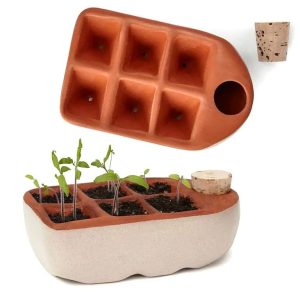
When we use a gardening kit to grow plants from seed, all we want to do is keep an eye on them and perhaps give them a bit too much care. However, this adorable self-watering planter from artist Anne Fletcher will make sure you don’t overwater your priceless seedlings. Once the seeds have been planted in the soil, fill the reservoir cup. The porous material of the planter will slowly draw water to the roots as needed. You can see precisely how much water is left, so when it looks like it could be running low, you should replenish it.
Balcony Garden
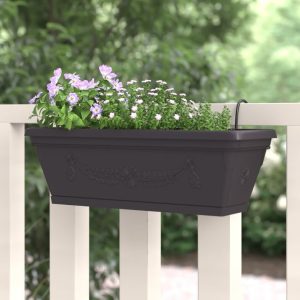
The ideal location to hang this planter is on a balcony or porch with a thin railing. This self-watering planter contains an interior reservoir that stores extra water till the soil dries up rather than drainage holes at the very bottom. Reviewers laud this product’s durability and how well it withstands windy conditions. Just be certain to measure your railing before purchasing!
High-Tech Herb Growing
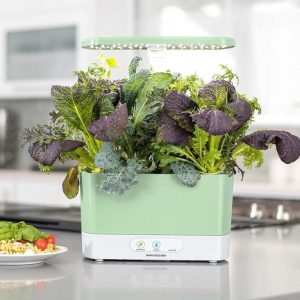
Check out the AeroGarden Harvest if your area doesn’t get enough sunlight for a windowsill garden to grow well.
Thanks to its 20-watt LED grow light, this indoor planter can grow six plants that are 12 inches tall at once in its hydroponic pod system. Wherever you can securely plug it in, it will function. An internal water pump that occasionally operates to help oxygenate the water, a sleek digital display with lighted push-button controls, and built-in settings to remind users when to add extra plant food and water are also included in the device.
DIY Plant Wall
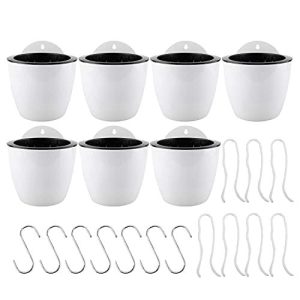
For arid conditions or when you simply don’t feel like carrying a hose around the yard, self-watering planters are fantastic. This collection of seven inexpensive planters may be hung from a wall or fence, making it a fantastic choice for trailing plants. You could even use them to create a full DIY plant wall if your space permits it!
Resin Planter
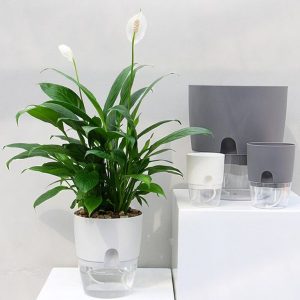
Self-Watering Resin Pot Planter Chelle Resin, a robust and simple-to-clean substance, was used to create this hydroponic planter. It is simple to check the water levels in your plant because the bottom level is visible.
Your plant will live a healthy life in this planter since ventilation holes are incorporated to avoid root rot.
Luxe Plant Tower
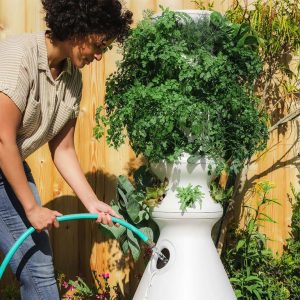
You may grow up to 36 plants in one container with Lettuce Grow’s Farmstand if you want to up your gardening game. You may just fill the base with water from a hose rather than misting the individual plants. This system functions more like a hydroponic garden than a conventional self-watering planter, but it also contains a kit with everything you need to create a flourishing garden.


